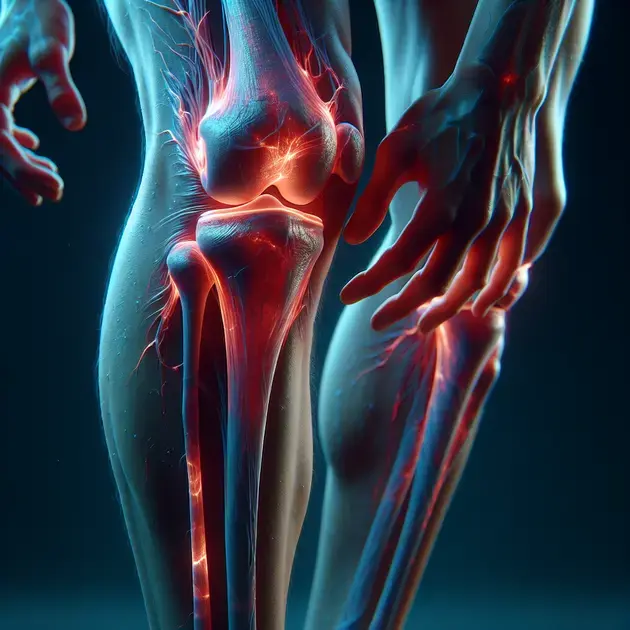Joint inflammation, a common condition that affects millions of people worldwide, can be caused by various factors such as autoimmune disorders, infections, or injuries. Understanding the root causes of joint inflammation is essential in order to effectively manage and treat this condition.
Recognizing the symptoms of joint inflammation, which include pain, swelling, stiffness, and limited range of motion, is crucial for early diagnosis and intervention. Fortunately, there are a variety of treatment options available, ranging from medications and physical therapy to lifestyle modifications and alternative therapies.
Causes of Joint Inflammation Explained
Joint inflammation, also known as arthritis, can be caused by various factors. One common cause is autoimmune disorders, where the body’s immune system mistakenly attacks the joints, leading to inflammation. Osteoarthritis, a degenerative joint disease, can also cause inflammation due to the breakdown of cartilage in the joints. Additionally, injuries or trauma to the joints, such as fractures or dislocations, can trigger inflammation as part of the healing process.
Diet and lifestyle factors can also play a role in causing joint inflammation. Consuming a diet high in processed foods, sugar, and unhealthy fats can contribute to inflammation in the body, including the joints. Lack of exercise and physical activity can lead to stiffness and inflammation in the joints as well.
To better understand and manage the causes of joint inflammation, consulting with a healthcare professional or rheumatologist is recommended. They can provide personalized advice and treatment options based on the specific cause of inflammation affecting your joints.
Symptoms of Joint Inflammation to Watch For
Recognizing the symptoms of joint inflammation is crucial for early intervention and treatment. Common symptoms include pain, swelling, stiffness, and reduced range of motion in the affected joints. In some cases, joint inflammation may also be accompanied by warmth and redness around the joint area.
It’s important to pay attention to any persistent or worsening symptoms of joint inflammation, as they can impact daily activities and quality of life. Keeping a symptom journal or using a health tracking app, such as MyTherapy or Symple, can help monitor and track changes in joint health over time.
If you experience severe or sudden symptoms of joint inflammation, such as intense pain or difficulty bearing weight on a joint, seek medical attention promptly. Early diagnosis and treatment can help prevent further damage to the joints and improve overall joint health.
Treatment Options for Joint Inflammation
Managing joint inflammation involves a combination of lifestyle changes, medications, and therapies to reduce pain and inflammation. Nonsteroidal anti-inflammatory drugs (NSAIDs) are commonly prescribed to alleviate pain and swelling in the joints. In some cases, corticosteroid injections may be recommended to provide relief for severe inflammation.
Physical therapy and regular exercise can help improve joint flexibility, strength, and overall function. Low-impact activities such as swimming or yoga can be beneficial for individuals with joint inflammation. Using heat or cold therapy, such as ice packs or heating pads, can also help reduce inflammation and provide relief.
In more severe cases of joint inflammation, surgical intervention may be necessary to repair or replace damaged joints. Consulting with an orthopedic surgeon or rheumatologist can help determine the most appropriate treatment options based on the severity of joint inflammation and individual health needs.
**Identifying Risk Factors for Joint Inflammation**
Risk Factors Overview
Joint inflammation can be influenced by various risk factors that individuals should be aware of. Certain lifestyle choices, genetics, and underlying health conditions can contribute to the development of joint inflammation. When considering risk factors for joint inflammation, it is important to analyze both modifiable and non-modifiable factors to understand how they may impact joint health.
Modifiable Risk Factors
One modifiable risk factor for joint inflammation is excessive weight or obesity. Carrying excess weight puts additional stress on the joints, leading to inflammation and potential damage over time. Incorporating a healthy diet and regular exercise can help manage weight and reduce the risk of joint inflammation. Another modifiable risk factor is physical activity levels. Engaging in high-impact or repetitive activities without allowing for proper rest and recovery can increase the likelihood of joint inflammation.
Non-Modifiable Risk Factors
Non-modifiable risk factors for joint inflammation include age and genetics. As individuals age, the risk of developing joint inflammation, such as osteoarthritis, increases. Genetics can also play a role in predisposing individuals to joint conditions. Understanding these non-modifiable risk factors can help individuals take proactive steps to manage their joint health effectively.
Environmental Factors
Environmental factors such as exposure to pollutants or toxins can also contribute to joint inflammation. Research suggests that certain environmental triggers may exacerbate inflammation in the joints, leading to discomfort and reduced mobility. Individuals in industrial or polluted areas may need to take extra precautions to minimize their exposure to such factors and protect their joint health.
Dietary Influences
Your dietary habits can also impact your risk of joint inflammation. Consuming a diet high in processed foods, sugar, and unhealthy fats can promote inflammation in the body, including the joints. On the other hand, incorporating anti-inflammatory foods such as fruits, vegetables, and omega-3 fatty acids can help reduce inflammation and support overall joint health. Making mindful choices about your diet can play a significant role in preventing joint inflammation.
Conclusion
Understanding the various risk factors for joint inflammation is crucial in maintaining optimal joint health. By analyzing both modifiable and non-modifiable factors, individuals can take proactive steps to reduce the likelihood of inflammation and damage to their joints. Modifiable risk factors, such as excessive weight and physical activity levels, can be managed through lifestyle changes like maintaining a healthy diet and incorporating regular exercise.
Non-modifiable risk factors like age and genetics highlight the importance of early prevention and management strategies for joint conditions. Recognizing these inherent risk factors can empower individuals to make informed decisions that support their joint health over time. Additionally, environmental factors, including exposure to pollutants, serve as a reminder of the external influences that can impact joint inflammation and mobility.
When it comes to dietary influences, the choices we make can significantly affect our joint health. Opting for an anti-inflammatory diet rich in fruits, vegetables, and omega-3 fatty acids can help counteract the effects of pro-inflammatory foods. By being mindful of what we eat and how it influences our bodies, we can actively work towards reducing inflammation and promoting overall joint well-being for a healthier, more active lifestyle.

